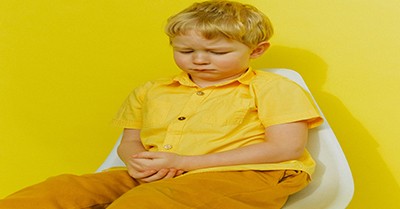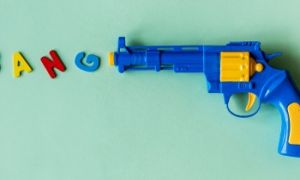Anxiety in young children often shows up in subtle ways ummy aches, restlessness, clinginess, or emotional outbursts. These feelings, sometimes described by children as having “the worries” or a “bubbly tummy,” can be overwhelming and difficult to articulate. As educators, we play a vital role in helping children recognise and regulate these emotions in safe, supportive ways.
The following article provides a simple, hands-on strategy that engages children’s attention, breathing, and body awareness—bringing calm and connection back into the moment.
The “Focus, Breathe, Move” Strategy
This technique uses three key elements to support emotional regulation:
1. Focus the Attention
Invite the child to look closely at something near them—a textured object, a pattern on the wall, or even their own hands. Ask gentle questions like:
- “Can you count the lines on your fingers?”
- “What colors can you see in this shell?”
This helps shift the child’s focus away from anxious thoughts and into the present moment.
2. Engage the Hands
Offer a small, tactile object to hold—like a smooth stone, a piece of fabric, or a sensory toy. Encourage the child to squeeze, roll, or trace it with their fingers. This physical engagement grounds the child and channels nervous energy into movement.
3. Guide the Breathing
Model slow, deep breaths using playful prompts:
- “Let’s blow up a pretend balloon—big breath in… now blow it out slowly.”
- “Smell the flower… blow out the candle.”
Breathing helps regulate the nervous system and restore a sense of calm.
Why It Works
This strategy is effective because it:
- Redirects attention from anxious thoughts to sensory input
- Activates the body in a safe, purposeful way
- Regulates breathing, which calms the nervous system
- Empowers children with a tool they can use independently
It’s especially helpful in transitions, moments of overwhelm, or when children are struggling to verbalize their feelings.
Materials You Can Use
Create a small “Calm Kit” with items like:
- Smooth stones or shells
- Fabric swatches or textured cards
- Feather or pom-pom
- Small mirror
- Breathing prompt cards (“Smell the flower, blow the candle”)
Store the kit in a quiet corner or make it portable for use during excursions or family handovers.
Further Reading
Supporting Families With Separation Anxiety In Childcare
Separation Anxiety In Babies and Toddlers
Supporting Children With Anxiety
Educator's Guide To Supporting Toddlers With Separation Anxiety
Separation Anxiety In Children
Supporting Children Manage Their Anxiety







 As an Educator in Australia, your pay rate falls under the Children’s Services Award 2010. This award states the minimum amount that an employer can
As an Educator in Australia, your pay rate falls under the Children’s Services Award 2010. This award states the minimum amount that an employer can When working as a qualified Early Childhood Teacher (with a university degree) within a service, your rate of pay will come from the Educational Services
When working as a qualified Early Childhood Teacher (with a university degree) within a service, your rate of pay will come from the Educational Services When working as a Diploma Qualified Educator your pay rate is from the Children's Services Award 2010. This Award states your minimum rate of pay
When working as a Diploma Qualified Educator your pay rate is from the Children's Services Award 2010. This Award states your minimum rate of pay When working as a Cert 3 Qualified Educator, your pay rate is from the Children's Services Award 2010. This Award states your minimum rate of
When working as a Cert 3 Qualified Educator, your pay rate is from the Children's Services Award 2010. This Award states your minimum rate of Educational Leaders play a crucial role in their early childhood service by ensuring that the educational program aligns with best practices and supports the holistic
Educational Leaders play a crucial role in their early childhood service by ensuring that the educational program aligns with best practices and supports the holistic In early childhood education and care, ratios are more than a technicality—they are a frontline safeguard. Every child deserves responsive supervision, emotional connection, and developmental
In early childhood education and care, ratios are more than a technicality—they are a frontline safeguard. Every child deserves responsive supervision, emotional connection, and developmental With the new national child safety reforms kicking in on 1 September 2025, early childhood services like yours have a real opportunity to lead the
With the new national child safety reforms kicking in on 1 September 2025, early childhood services like yours have a real opportunity to lead the Here’s a comprehensive Mobile Phone and Smart Watch Policy tailored for early childhood education and care (ECEC) services in Australia, aligned with the latest 2025
Here’s a comprehensive Mobile Phone and Smart Watch Policy tailored for early childhood education and care (ECEC) services in Australia, aligned with the latest 2025 The Sea of Fish Challenge is a national initiative that invites children, educators, families, and communities to create and display fish artworks as a symbol
The Sea of Fish Challenge is a national initiative that invites children, educators, families, and communities to create and display fish artworks as a symbol Across the early childhood education and care sector, educators are sounding the alarm: current staffing ratios are insufficient to deliver safe, meaningful, and developmentally appropriate
Across the early childhood education and care sector, educators are sounding the alarm: current staffing ratios are insufficient to deliver safe, meaningful, and developmentally appropriate


